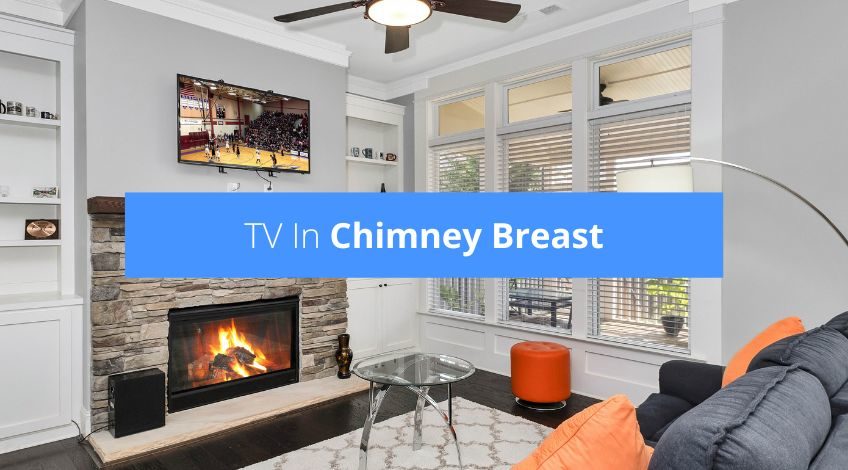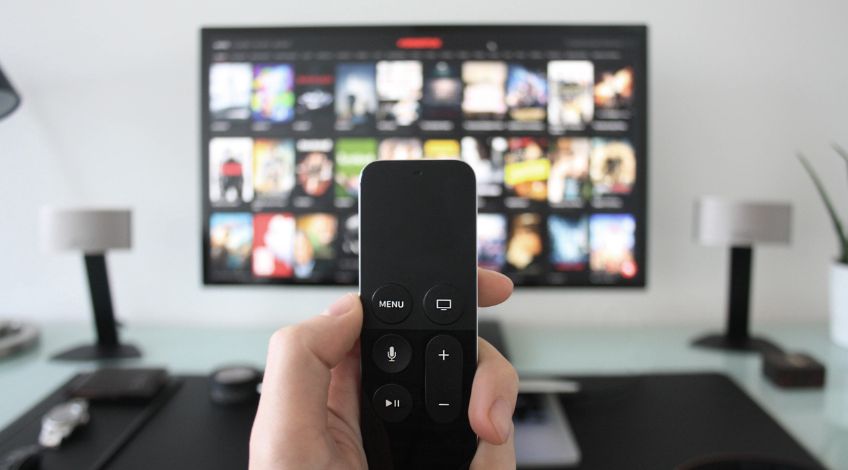
TV In Chimney Breast? (here’s what you need to know)
In many ways it makes sense to mount your TV on the chimney breast. It is, after all, the main focal point of the room. However, there are a few points that you need to consider before commencing.
The thing is heat and electronics don’t usually mix too well. Depending on how well insulated the chimney is and what type of fire you have set into the fireplace, it could be too hot to safely hold a TV.
Check The Temperature Of The Chimney Breast
The recommended temperature limit for any TV is no warmer than around 36 degrees C (97 F) plus it’s worth remembering that TVs generate quite a bit of heat themselves. To check the temperature of the chimney breast, get the fire going to the average heat you would keep it burning during a cold Winter’s night and use a laser thermometer to check the temperature of the chimney breast.
As long as the chimney breast is insulated fully it should be OK and the temperature will be within a comfortable range for hanging a TV. However, if it is just below 36C or very close to it, we’d recommend finding somewhere else to put your TV.
What Would Happen If You Exposed The TV To Extreme Heat?
If your chimney breast does happen to get within the dangerous temperature range and you decide to hang your TV on there anyway there are a couple of things which could happen. Either;
- Some of the internal components of the TV could actually melt right through the frame of the TV.
- Some of those internal parts could just stop working altogether or develop faults.
- The screen could become pixelated.
- The colours of the picture could fade.
- The screen could fail completely.
One or more of these faults could develop and you would also void any warranty you have on your TV.
Does The Type Of Fire Make Any Difference?
In terms of overall heat, there’s possibly no difference in which type of fire is causing the chimney breast to heat up. However the type of fire does make a difference when it comes to controlling the amount of heat. For instance a gas fire or electric fire can be switched off to reduce the temperature quite quickly.
Whereas a solid fuel or wood burning fire can rise in temperature incredibly fast and could do untold damage to the TV in seconds. As well as any smoke or ash which are emitted from the fireplace during exceptionally windy periods which could also damage the TV.
If you have an open fire, it is essential that the chimney is swept regularly to cut down on the possibility of soot affecting your TV. Soot has the potential to damage your TV whether it is hot or cold and even if the TV is turned off.
What To Do With The Wires
If you do go ahead with mounting your TV above the fireplace, on the chimney breast, what are you going to do with the wires? Leaving the wires to hang in a disorganised manner just looks bad. Plus with a hot chimney breast, the wires could begin to melt, catch on fire and cause even more problems.
There are a couple of ways you can solve the wiring issues, which are;
- Recess the wires into the plaster coating the chimney breast (if applicable). As long as the chimney breast is sufficiently insulated this is a great way of hiding the wires.
- Channel the wires through a fibreglass sleeve. This is quite an expensive option but at least with the extra insulation from the fibreglass, the wires should be safe.
Another factor to consider is whether the mantle shelf will affect the height of the TVs final position. Depending on where you usually sit, you might have to remove any ornaments etc that are usually displayed on the mantle shelf.
To ensure you get the ideal position to hang your TV, hang a cardboard mock up of your TV and try sitting in the various chairs in your TV room. Make sure you have an unrestricted view of the screen in every chair. This will save you from getting any neck problems further down the line.
Fixing The TV To The Chimney Breast
Depending on the composition of your chimney breast, and how well insulated it is, it is possible to mount the TV to it. There are a number of ways this can be achieved and you should consult your user manual or contact the manufacturer directly to find out the most secure way of fixing your TV to the chimney breast.

How To Fix A TV To A Chimney Breast
To fix a A TV to a chimney breast made from concrete or masonry you will need;
A suitable wall bracket, power drill, masonry drill bits, screws and wall plugs or concrete screws, washers, spirit level, steel rule, rubber mallet and gloves, safety goggles and safety mask.
- Select the right spot to place the TV
Attach the bracket to the TV and measure the distance from the bottom of the bracket to the bottom of the TV. Take this measurement into account when measuring from the floor to get the desired viewing height of the TV. - Using the bracket, mark the exact points where screws will be placed
Remove the bracket from the TV and place the bracket at the point you just measured. Then mark the wall at the exact points you will need to drill for the screws to hold the bracket to the wall. - Drill the holes in the chimney breast
Using the correct sized drill bit for the wall plugs or concrete screws, drill the holes at the spots you just marked. - Now’s the time to install wall plugs, if you’re using them
Gently tap the wall plugs into the drilled holes using the rubber mallet, emphasis on the gently. - Attach the bracket to the wall
Align the holes in the bracket to the drill holes and attach the bracket using screws, add washers if needed and ensure everything is level before tightening the screws up. - Attach the TV
Reattach the TV to the bracket and connect all wires etc.
Is It Safe To Hang A TV On A Chimney Breast?
AS long as the construction of your chimney breast is solid, and the temperature of the wall falls within the safe parameters, it should be safe enough for a TV. If your chimney breast is constructed from bricks, you need to be sure that your fixing screws are actually attached to the bricks and not the mortar which binds the bricks.
The mortar will weaken over the years and depending on how long ago the chimney was constructed, that could be sooner rather than later. Obviously, the screws need to be fixed into a solid surface to ensure they will support the weight of your TV.
If you’re confident with the following you should be good to hang your TV on the chimney breast, you need to ensure;
- The temperature of the chimney breast
This should be lower than 36C (97F) when the fire is in full heat mode. - The construction of the chimney breast
Your chimney breast needs to be constructed of a material solid enough to support the weight of your chosen TV indefinitely. - The height that the TV will be sited
Is it possible to see the TV from every chair in the room without causing you any neck pain etc?
Can You Recess A TV Into A Chimney Breast?
If you no longer use the fireplace for any kind of fire and the chimney has been blocked off, There’s nothing to stop you from recessing the TV into the wall but unless you have knowledge of structural engineering we would recommend consulting a builder.
Frequently Asked Questions
You can put a TV in a chimney breast as long as the chimney breast temperature doesn’t exceed 36C (97F) when the fire is alight and the wall fixings are adequate.
As long as the fireplace isn’t being used, you can put a media wall in a chimney breast. If the fireplace is being used, you will need to consider the temperature of the wall when the fire is alight. If the temperature of the wall exceeds 36C (97F) it is not advisable to expose any electrical equipment to any temperatures greater than 36C especially TVs as some of the internal components could melt, break or catch fire.
In most cases, chimney breasts are load bearing which means you should never remove a chimney breast without consulting a structural engineer first. Otherwise you could be putting the structural integrity of your building at risk.

![How Does The New Energy Rating System Work For Appliances [A-G rating system]](https://checkappliance.co.uk/wp-content/uploads/2023/11/How-Does-The-New-Energy-Rating-System-Work-For-Appliances-A-G-rating-system-551x341.jpg)


